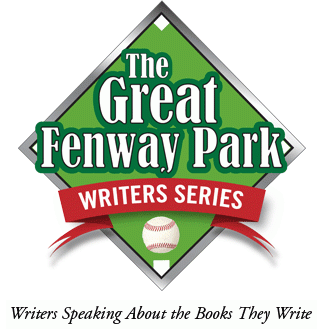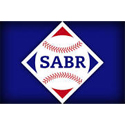You Are What You Read
This article originally appeared in the Huffington Post.
Paras’ newsstand in San Diego’s North Park community has been there as long as I can remember (if only I could remember how long that’s been).
I love newsstands, and no matter where I’ve lived over the years, there have been newsstands in my life.
When we lived in Pasadena and Whittier, I thought nothing of driving to Hollywood to a newsstand that first opened in 1937 (no, I didn’t make the opening). Then and now the stand had just about everything – from foreign newspapers and magazines to the broadest possible range of American periodicals. Why would I make that trip? because neither Whittier nor Pasadena offered anything comparable.
In Washington, while working for Congress, the newsstand I most often frequented was down Pennsylvania Avenue from the Library of Congress. In New York City, where my duties as press secretary to Senator Charles Goodell often took me, I loved the huge newsstand near his office in the Postal Annex Building (Grand Central Station was nearby).
In my world of values, beyond family and faith, newsstands rank second only to bookstores – and my history with Paras exceeds that of all others.
In these tough economic times the fact that Paras still stands, and even thrives, is nothing short of remarkable. Yes, the newsstand underwent an ownership change, but the young gentlemen who took over, Ken Grabber and Junior Najor, are no less committed to making Paras work than the previous owners – Rocky and Mike Attallah.
Of course, to make it work you have to sell more than magazines and newspapers, and Paras does – from lottery tickets to Dunkin Donuts Coffee; but neither lottery tickets nor Dunkin Donuts Coffee defines Paras, periodicals do.
Where did this start, this interest in magazines and newspapers found at newsstands?
When I was a kid growing up in North Park the one publication I read every week was The Sporting News, otherwise known as “The Bible of Baseball.” For 25 cents I would pick it up every Tuesday afternoon at the drug store at 30th and Upas. On those Tuesdays when it wasn’t there, because of delivery problems, I was crushed. I loved The Sporting News. I read it cover-to-cover, including the entire box scores from minor league games. Did that make sense? Probably not, since no one has ever asked me how the Class D Pioneer League’s Great Falls Electrics did in ’48 (they finished 7th).
I would pay 10 cents and ride the number 2 trolley downtown from North Park to the out-of-town newsstand on Broadway. (One of the dumbest things San Diego ever did, and it is not a short list, was to exchange trolleys for buses. Yes, the trolleys are back – as “light rail” – but it doesn’t change the stupidity of the intervening years. True, San Diego’s role in this was repeated by every municipality in America, save San Francisco. It was the results of a massive conspiracy by General Motors and tire companies, who sold buses not trolleys; but San Diego should have seen it coming, but the city didn’t.)
Going to the out-of-town newsstand was always exciting, and even though I didn’t have much money and could only afford one or two newspapers or magazines – Life magazine was 15 cents back then – just being able to browse made the ride worthwhile – as there was a world to discover beyond the insular little Navy town I grew up in. (Later I worked out a deal with the city’s librarian to give me at month’s end the out-of-town newspapers the library subscribed to (which otherwise would have been trashed); thus I could be seen riding the number 2 back to North Park and home with a month’s back copies of the Louisville Courier-Journal or the Minneapolis Star-Tribune (or other comparable newspapers).
When I graduated from high school I made plans to attend Pasadena (Nazarene) College. That was a good decision but a bad one followed. I threw away more than 500 back issues of The Sporting News. True, they weren’t going to Pasadena with me (dorm rooms are shared and tiny) and neither my siblings nor parents read The Sporting News, so they were gone. But still I think about my decision, especially when I read online a 1949 Opening Day copy is selling for $72. (The Sporting News is still published, but it is no longer devoted solely to baseball, having been corrupted by coverage of football and basketball, and, even, worse, truly, NASCAR; if that isn’t un-American, what is?)
But in college my reading broadened – significantly.
I began subscribing to serious magazines, many first discovered at newsstands. There was The Christian Century, Christianity & Crisis, and Christianity Today – the first two theologically liberal and the third, conservative. That pattern persisted with political journals like The New Republic, then decidedly liberal, and William F. Buckley’s National Review, decidedly conservative (only later would it morph into a right wing publication, losing its standing as a serious journal reflecting historic conservative values). I also read The Atlantic Monthly and Harpers Magazine, The Reporter and The Saturday Review, a magazine that under Norman Cousins’ brilliant editorship was an indispensable read. (Many years later, thanks to Joan Kroc, Cousins came to The City Club of San Diego to speak. That was big, as he was one of my literary heroes.)
In my seemingly never-ending quest to balance what I read, I subscribed to two British magazines, The New Statesman and The Spectator. The first aligned with the Labour Party and the second the Conservatives. (The original Spectator was founded by Joseph Addison and Richard Steele in 1711. It didn’t last long but would serve later as the inspiration for Samuel Johnson’s The Rambler; and it was from Johnson’s incomparable genius the first dictionary of the English language was published – a replicate copy of which sits on a book stand near my desk.)
As a college kid I did something I’m reasonably certain few college kids did. I had my copies of The Christian Century, a weekly magazine, bound in book form. They remain in my library, and from time to time I dip into their pages, attempting to discover if what excited me intellectually 50-years ago excites me intellectually now. Lots of things change in this life, but theological disputes have amazing staying power; which is one reason why the Christian church stills stands – 21 centuries on; its essential message of love and redemption relevant in a world that fundamentally offers too little of either – love or redemption.
Somewhere along the way, in this intellectual journey driven by endless curiosity, I began reading literary, political, and theological quarterlies (Theology Today and Reformed Journal). Quarterlies have an influence vastly greater than their often-microscopic circulations (they are to popular culture magazines like People, Us, and Entertainment Weekly, what the French Resistance was to the Nazi occupation.) It’s amazing how many quarterlies are still published, some with long and distinguished histories, despite circulations of only a few thousand readers – this, mind you, in a nation of more than 300 million people.
The late George Plimpton edited The Paris Review for more than 50-years. Many considered it the world’s finest literary quarterly. But even allowing for its remarkable influence on all things literary – not least its priceless interviews with famous novelists – its circulation seldom exceeded 13,000 subscribers. It survived because of Plimpton’s transcendent charm – he was one of a kind – and a group of devoted friends, including the Aga Kahn, Brooke Astor, and all the Kennedys. (On The Paris Review’s 45th anniversary The Kensington Group, a local Saturday morning breakfast set, bought a full-page ad celebrating The Review’s accomplishments. It was a good deal, earning life-time subscriptions.)
But few quarterlies have a long shelf life independent of a college or university association. From The New England Quarterly (Middlebury College) to the Swanee Review (University of the South), from the Virginia Quarterly (University of Virginia) to The Southern Review (LSU), their existence depends upon those connections. And even then, some are having a tough time, most notably The Virginia Review, which is undergoing cutbacks and controversy.
Which brings back to where this essay began, with Paras Newsstand in North Park:
Of all the bookstore and newsstands I have been blessed to browse – trust me, it’s a very long list, from Powell’s in Portland to Foyles in London, from the newsstand at Harvard Square in Cambridge to the one at City Lights in San Francisco – none matches the selection of quarterly publications and magazines of substance offered by Paras – none.
Despite the presence in San Diego of universities of world acclaim, the city is seldom confused as the intellectual capital of the U.S. When people think of San Diego they think of sunshine and ocean breezes, they don’t think of it as a place where intellectuals gather. The idea, therefore, that the city has a newsstand perhaps unrivaled in America, would surprise them – but it does.
Let me underscore that claim, by a simple fact: Paras carries more than 250 quarterlies and serious monthly magazines; publications dedicated to the arts, ideas, literature, language, poetry, politics, science, governance, and world affairs.
Yes, they are all there – African Voices, American Spectator, Harpers, Middle East Report, National Interest, National Review, Oxford American. The Atlantic, The Nation, The New Republic, and World Literature Today, a quality periodical published by Oklahoma University (and you thought Okahoma only excelled in football).
In addition, the list of quarterly “reviews” is very long – Alaska, Antioch, Atlanta, Chicago, Colorado, Georgia, Gettysburg, Harvard, Hedgehog, Hudson, Indiana, Iowa, Kenyon, Missouri, Seattle, Southern, Spoon River Poetry, Swanee, and Yale,
Plus, such important quarterlies as Daedalus, Dissent, Fletcher Forum, Granta, Image, Lapham’s, Modern Age, N+1, Political Science, Raritan, Salmagundi, Tin House, TriQuarterly, Utne, Washington Square, West Branch, and Zyzzyva.
The section featuring book review periodicals carries Bloomsbury, Bookform, Books & Culture, Boston Review, Threepenny, Women’s Review of Books, and the New York Review of Books (America’s penultimate intellectual journal).
But any newsstand that doesn’t carry Horn Book and Stone Soup, two superb publications for children, would be a newsstand unworthy to be called, “Paras.”
In our world with its ever-cheapening values and moral obtuseness, literature, in all its varied forms, beams as a light against the encroaching darkness.
Browsing at newsstands is a great way to spend your leisure time – and there are few places better to spend your money.
I am grateful for newsstands everywhere – but especially for Paras.







